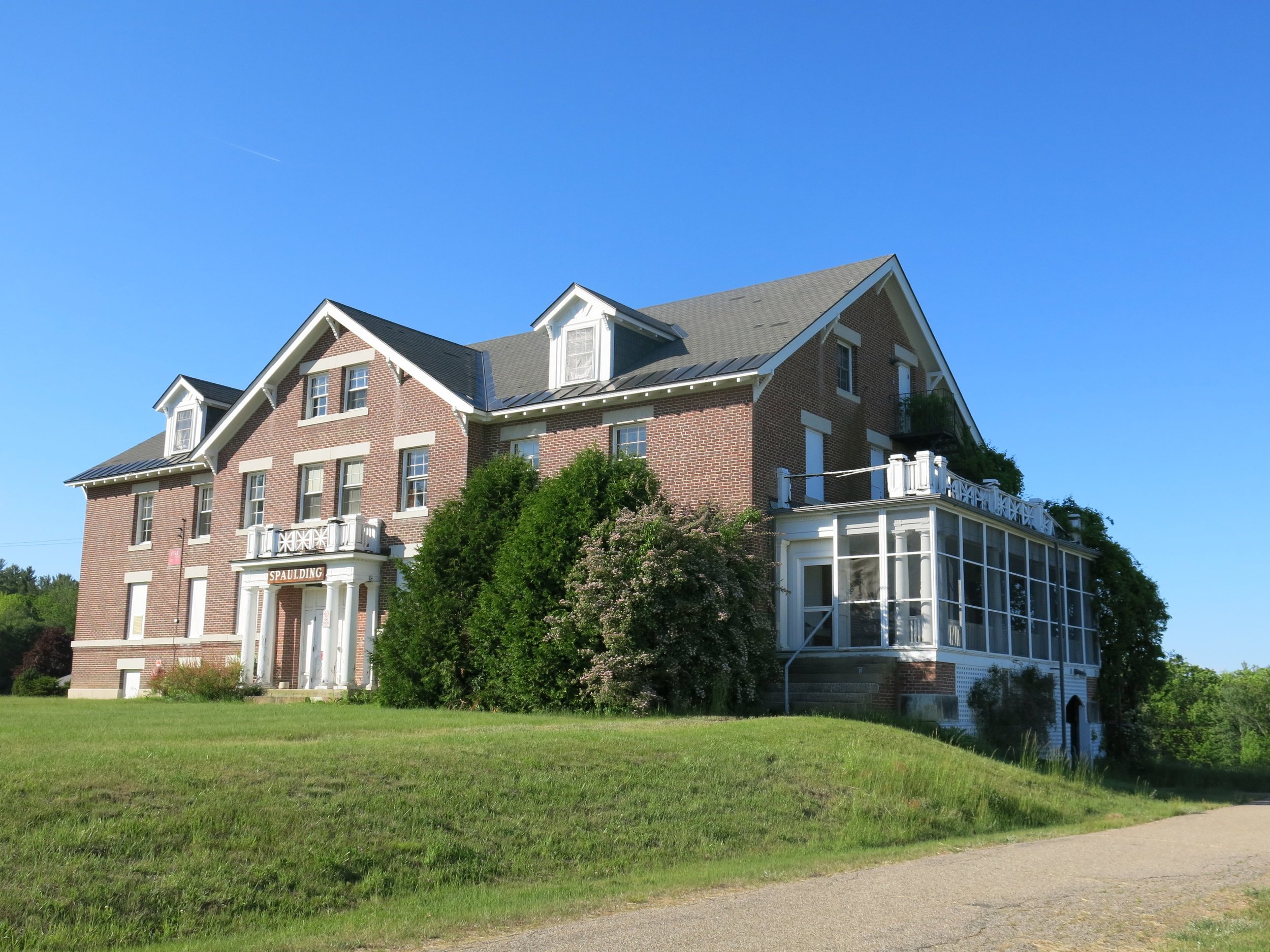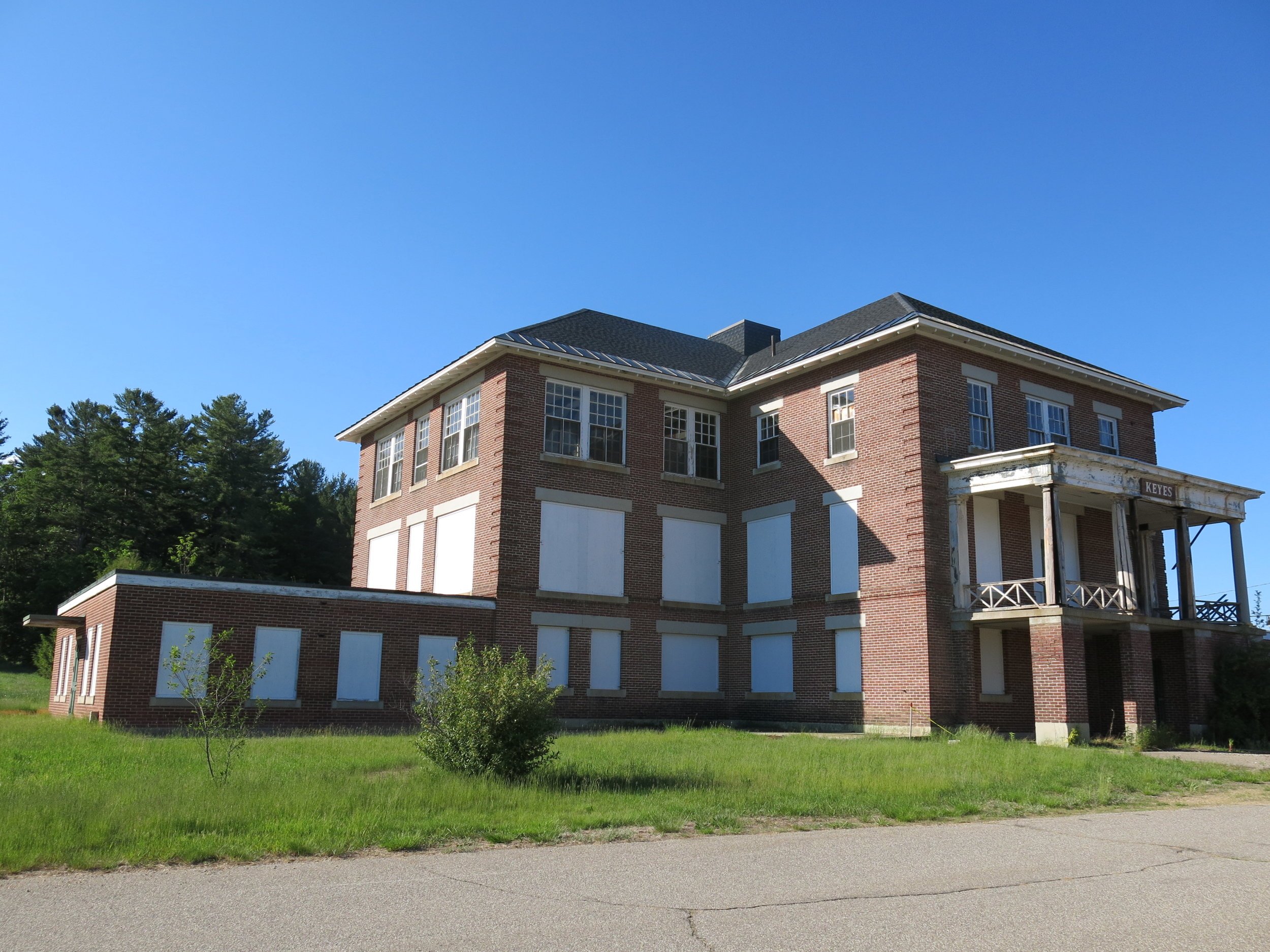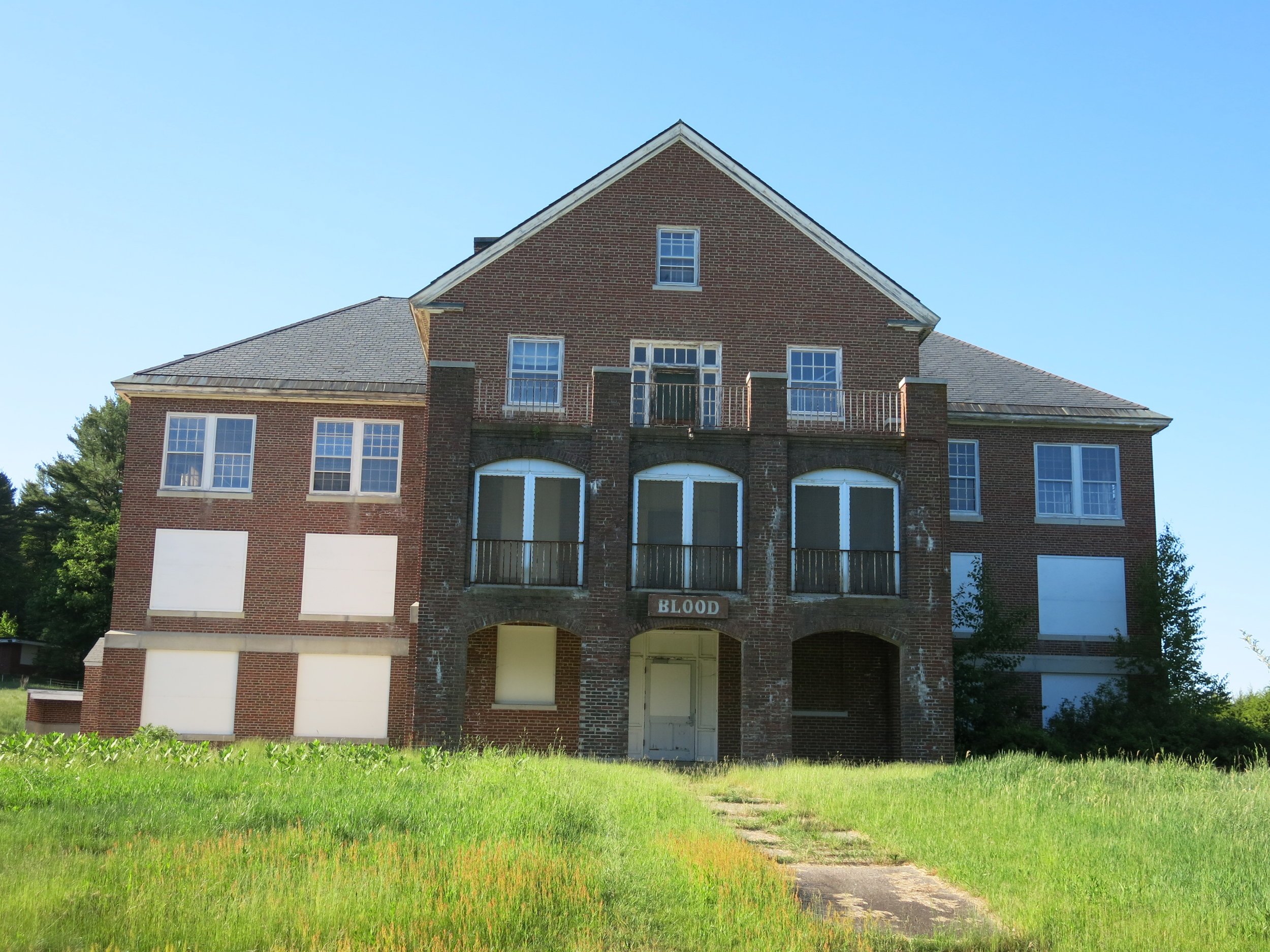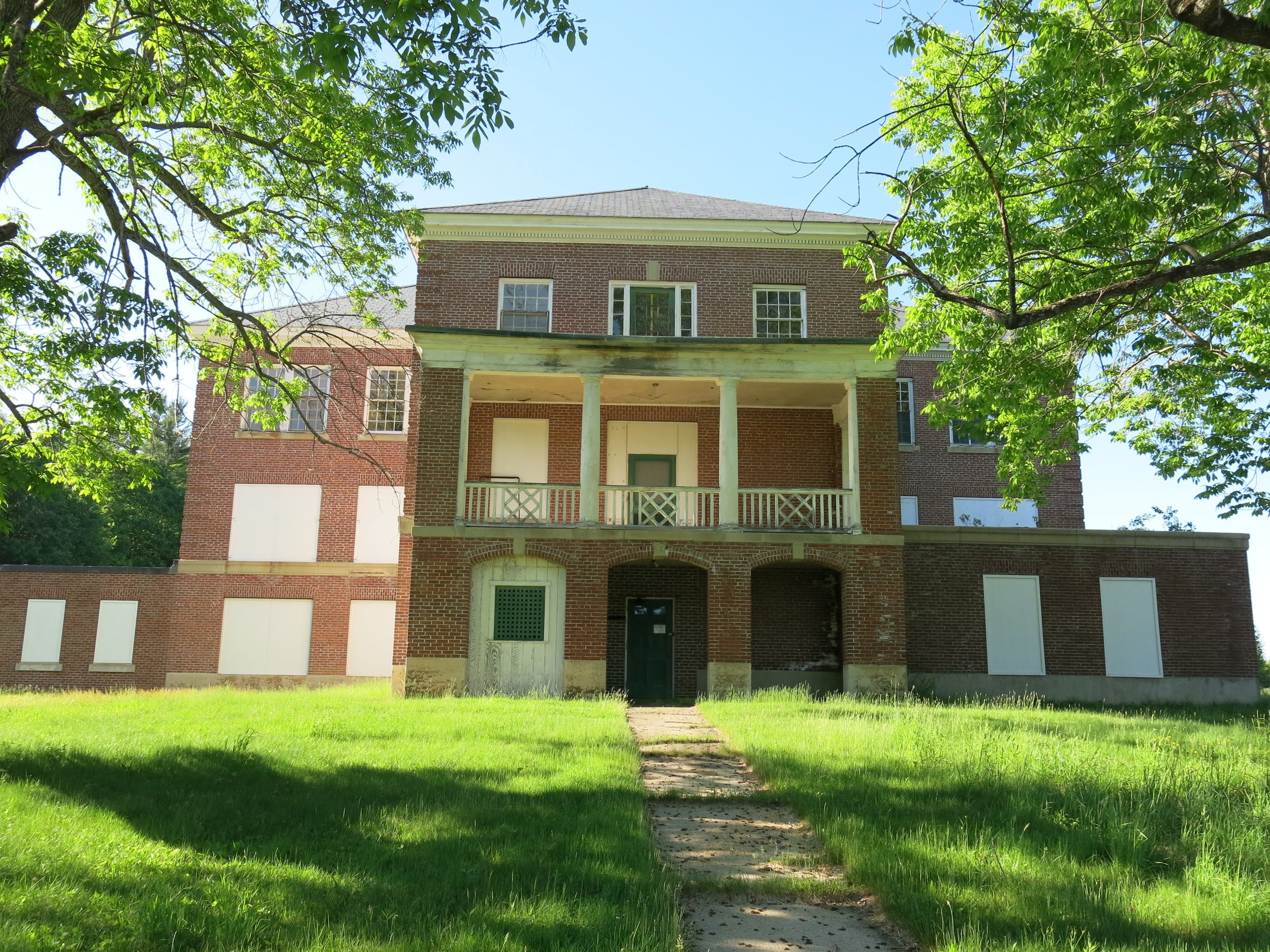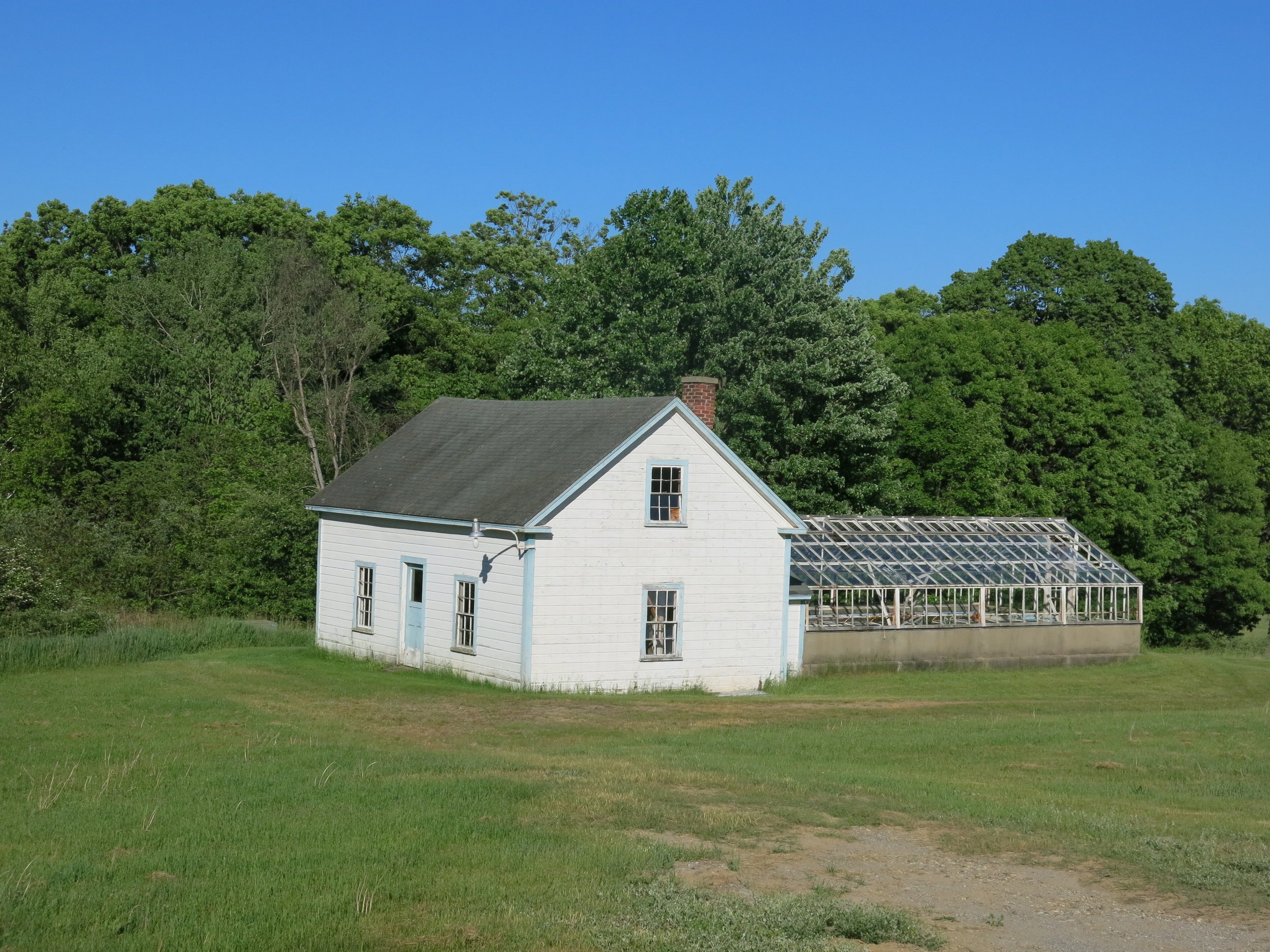Laconia State School: Seven to Save Profile
The New Hampshire School for Feeble-Minded Children opened in 1903 and, from the outset, the School was a source of pride for Laconia. Its 247-acre campus set on a rise between Lake Winnisquam and Opechee Bay and was designed to be curative in nature. Here, children between the ages of three and twenty-one who could not get the care they needed at existing facilities (county poor farms or state hospitals, for example) could learn skills in an environment tailored for their needs.
Early on, there were two school sessions daily, where pupils were “given instruction in industrial work” – the girls made “raffia work, basketry, rugs and knitted items” and worked in the sewing rooms, while “the boys work[ed] on the farm and in the manual training shop.” The dairy herd was recognized as one of the finest in the state, and milk was processed at the Weeks Dairy in Laconia.
Boys digging for a cement wall at the Laconia State School. Courtesy photograph.
By August 1916, there were nearly 300 pupils on site with a large waiting list. The campus continued to grow to meet the increased need, but overcrowded conditions worsened through the Great Depression. (In 1924, the campus was renamed the Laconia State School.) By 1942, the population had increased to 600, and by 1974 over 1,000 residents called the Laconia State School home. Calls to increase funding were rejected by the state legislature until a successful lawsuit in 1978 forced the state to reduce the numbers of residents, increase staffing, renovate several buildings, and develop community-based mental health initiatives.
The institution was finally closed in 1991, leaving most of the historic brick buildings vacant. A state-sponsored redevelopment plan is currently underway and is charged with finding a solution that meets local and state goals. This plan is complicated by the site’s cultural and architectural history. For many New Hampshirites, the site represents a painful time in families’ pasts - stories that were chronicled in the documentary, “Lost in Laconia.”
The Laconia State School campus was determined eligible for the National Register of Historic Places. Its campus of 20th century buildings, barns, stone walls, mature trees, and panoramic views make the site architecturally significant. Its history of institutionalizing children within this campus - regardless of the intended benevolence - makes the site equally significant. We should not erase histories that make us uncomfortable.
The agricultural history and opportunity is an important consideration in the site’s reuse. Photo courtesy of Cristina Ashjian.
HOW YOU CAN HELP
The Lakeshore Redevelopment Planning Commission’s website includes minutes of past meetings and planning documents. If you have thoughts about how this site should best be used to meet the needs of the State, Laconia, and those who lived or worked there, contact them.
The master planning is ongoing, but it’s best to participate sooner, rather than later.
Our thanks to historian, Gordon DuBois, for his history on the Laconia State School, and to Cristina Ashjian, for her photographs.
